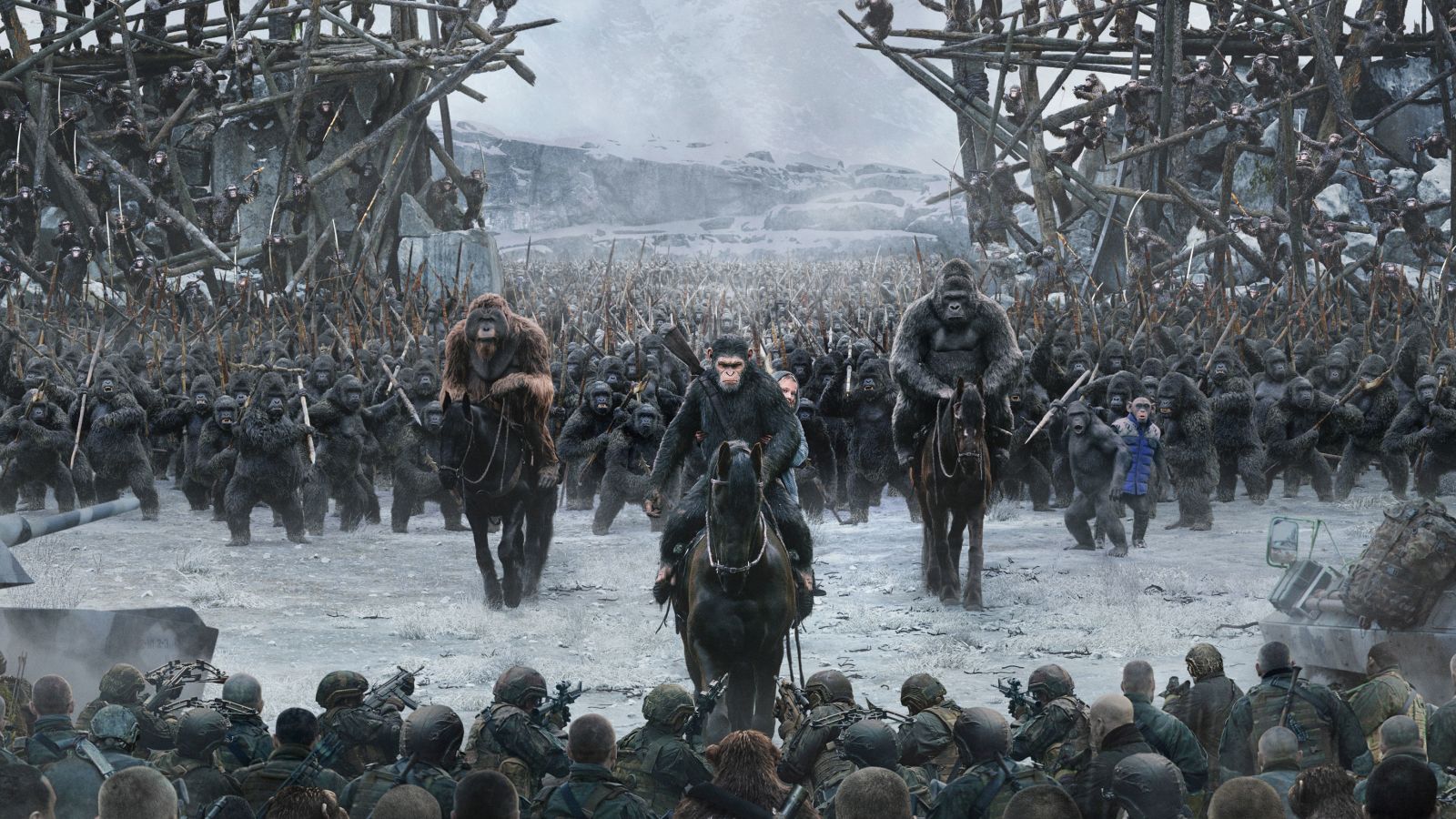
Deuteronomy 34:1-4
Following the events of Dawn of the Planet of the Apes, Caesar (Andy Serkis) and his group of mentally evolved apes in what used to be the San Francisco area are in the middle of an armed conflict with the remnants of the American military, led by a ruthless Colonel (Woody Harrelson). In the midst of a plan to move his community to a safer, more remote locale, Caesar suffers an unimaginable loss that he can’t let go of. To gain revenge, Caesar embarks on a dangerous quest where we finally observe the difference between man and ape, and the future of the planet and which species rules it is determined.
What struck me about WFTPoTA is its examination of humanity and our relationship with brutality and violence. The premise of the Planet of the Apes as a franchise is ostensibly about apes becoming more human-like, and that evolution effectively equipping them to become capable of taking over the Earth. But what War shows us through its human and ape characters, it is the differences between ape and man that allows the apes to overtake their human cousins and rule Earth in their stead. This is best portrayed through the turncoat gorilla Red (Ty Olsson), demeaningly called Donkey by his human commanders, and the soldier spared from death by Caesar at the beginning of the film. Red spends the film pursuing the end of Caesar and the apes even at the expense of his own dignity, shamefully participating in their subjugation, humiliation, and deaths. Throughout this, Caesar reminds Red of his simianity; that he is still an ape. Despite his dislike of Caesar, in the end, Red cannot fully turn his back on who and what he is, saving Caesar and the fleeing apes from death at the hands of the humans in the end, even at the cost of his own life.
Juxtapose this with the actions of the soldier that Caesar saves from death. In an effort to convey his peaceful nature and intentions, Caesar let a group of three captured soldiers go, unharmed, instead of killing them as the humans expected the “savage apes” to do. The same soldier is also present as the Colonel explains his eugenist-type philosophy on putting down humans that have exhibited signs of a mutated form of the simian flu, losing cognitive ability and the ability to speak, making them “inhuman” in the Colonel’s eyes and opening mankind up to the possibility of being overtaken by the apes for supremacy on the planet. Despite these clear opposing examples of the apes’ lack of cruelty versus his leader’s embrace of it, and his clear understanding of which is wrong, the soldier still stands ready to kill Caesar at the end of the movie until he himself is killed by Red. And this presence of compassion from apes even at the sight of an enemy being harmed shown against the human still preparing to kill one he knows is innately good in service of one he knows is not is meant to show the viewer the difference between the two groups and why one was destined to destroy itself.
The culmination for Caesar from gifted ape hidden away in a scientist’s home to leader of an ascending tribe has an overtly biblical tone. Like Moses, Caesar leads his people to their own “promised land”, is able to see the land with his own eyes, but dies before being able to head down it, enjoying the fruits of his labor. His end was bittersweet, packing just the right amount of emotional punch for a character viewers have come to love.
WFtPoTA continues the modern franchise’s innovations in the field of motion capture, with these CGI-apes being the most lifelike yet. Despite hundreds of computer generated apes being present on the screen at times, you never really feel like you’re watching something that isn’t really there. What these films have done for the technique cannot be overstated and will be recognized for the duration of cinema history.
Image: 20th Century Fox

